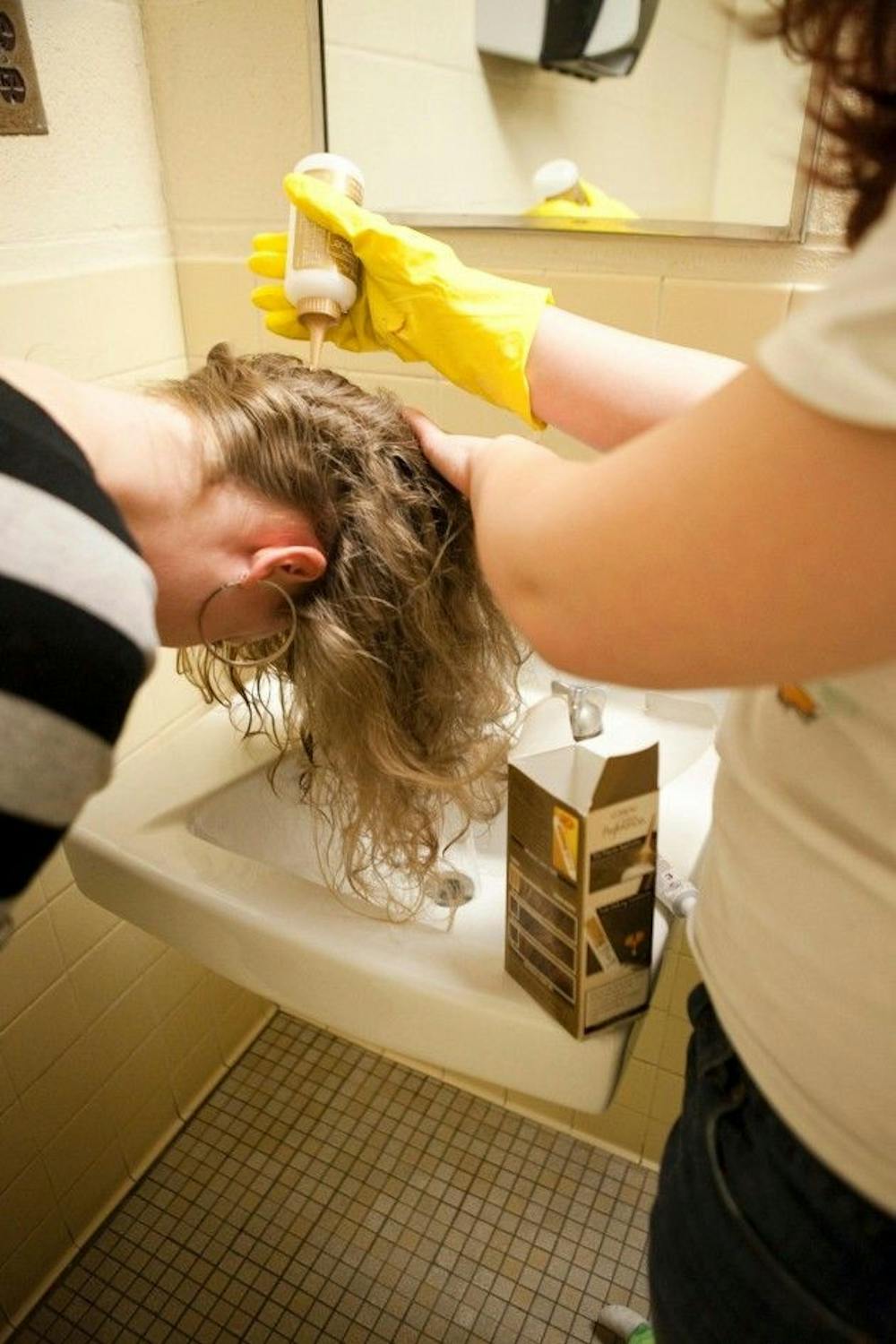For college students on a budget, doling out $100 every six weeks for hair treatments may be fiscally impossible, but the adverse effects of store-bought hair-coloring products might not be worth the money saved.
"The damage that occurs from coloring hair is not so much about the chemicals in the products, but the way in which it is applied and in what amounts," said Karen Butler, a master stylist at Studio LaRue Salon and Spa. "The biggest problem is people who do it at home and have no idea what they are doing."
Butler said people who buy store-bought dye generally do not have the training provided in cosmetology school. Instead of dying just the new growth of the original hair color, they dye their hair all over again, which puts exorbitant amounts of harmful chemicals into their hair.
Angela Elliot, a student at Empire Beauty School, attributes the frizzy and dried out look of box-dyed hair to the high concentrations of hydrogen peroxide and ammonia found in some store-bought hair dye.
"Professional products, like Redken, Goldwell or Aveda, usually have a hydrogen peroxide concentration of around 10, but box dyes typically contain a concentration of 40," Elliot said.
Elliot said the harmful ammonias in hair dye strip hair of natural oils and pigments, a sort of "blow-out of nutrients," and pull out the minerals that serve as protectors against sun damage.
Ammonia is a strong oxidizing agent used in various household cleaners.
"The main function of an oxidizing agent is to destroy color chemicals and kill bacteria, like taking stains out of clothes," said Erno Lindner, a chemistry professor at the University of Memphis. "In hair there are lots of chemical bonds, and the ammonia from the dye would cause hair to break."
Butler said the most damage occurs when someone dyes their hair a dark color like brown or red and then puts something like highlights on top.
"When you dye your hair a dark color and put a light color on top, it causes the elasticity of the hair to wear thin, especially since blonde has higher levels of peroxide which may be more damaging," she said. "The result can be a spongy-like feel to hair or the hair thinning."
A lot of the damage can be mitigated if someone uses an ammonia-free hair dye.
"Products without ammonia strip pigment out of hair without compromising the cuticle layer of hair," Butler said. "These products are generally made of more natural ingredients rather than chemicals."
If someone has already damaged hair through extensive dying, there is some hope for restoring hair back to a presentable state.
"A keratin treatment will put protein back in the hair and smooth it out, this is especially helpful for damaged hair and older people, since as we age our hair stops producing keratin," Butler said. "The results are usually immediate."
Keratin treatments are typically done on a four-month basis and cost about $200 dollars for medium-length hair.
Butler said that correcting the damage clients inflict on their hair when they experiment with store-bought color is more costly than if they had just got it done professionally to begin with.
"If a client of mine comes in with box-dyed hair, I have to charge for all of the extra conditioning treatments and products used to correct the damage," Butler said. "We also have to charge for the extra time, because it all has to be done in one day - it is a big undertaking."
Although a self-proclaimed novice in the world of hair, Lindner said the safest way to ensure hair health is to stick with natural color.
"If the dye is made out of the same chemicals used to clean windows and take out stains in clothes, I would stay away," Lindner said, laughing. "I tell my daughter not to do it, but she does what she wants."




